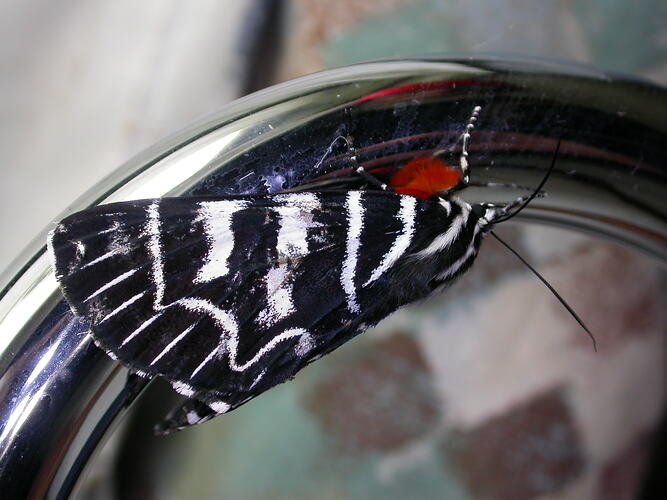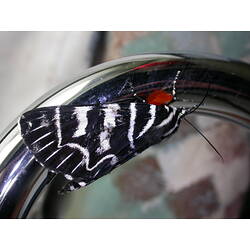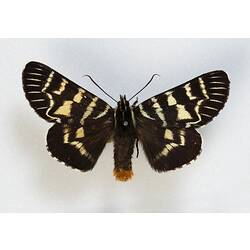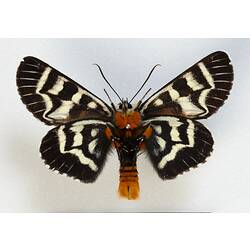General Description
Adults are black with five white lines across the forewing, some short and the outermost scalloped with two pointed projections. Between the outer line and the edge of the wing are seven white lines following the veins. The abdomen had a red or orange tip. The wingspan is 5-7 cm, with the females larger than the males. Caterpillars are black with numerous thin white bands. The head, legs and tail are orange and there are a pair of red protuberances on the back towards the tail end. Length up to 6 cm.
Biology
Caterpillars are found on mistletoes growing on a range of trees, including eucalypts. The moths feed in the open and, presumably, are distasteful to birds. When disturbed they curl their head up and back. Adults are most commonly observed in summer.
Distribution
Throughout mainland Australia.
Habitat
Forests and woodlands where there are mistletoes.
More Information
-
Animal Type
-
Animal SubType
-
Brief Id
A large, spectacular, black and white day-flying moth often mistaken for a butterfly.
-
Colours
Black, White
-
Maximum Size
7 cm
-
Habitats
-
Diet
Herbivore
-
Endemicity
-
Commercial
No
-
Conservation Statuses
CITES: Not listed, FFG Threatened List: Not listed, EPBC Act 1999: Not listed, IUCN Red List: Least Concern
-
Flight Start
October
-
Flight End
April
-
Taxon Name
-
Scientific Author
(Angas, 1847)
-
Common Name
Mistletoe Moth
-
Kingdom
-
Phylum
-
Subphylum
-
Class
-
Order
-
Family
-
Genus
-
Species Name
behri






